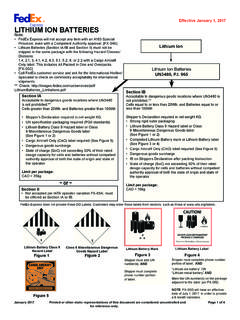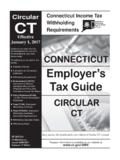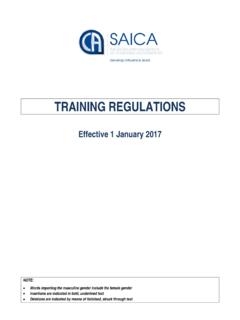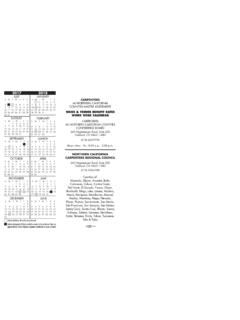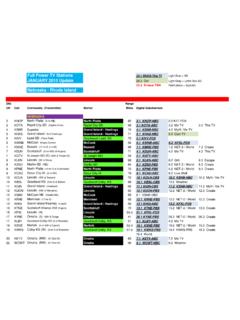Transcription of DOT Rule Change Effective January 1, 2018 The U.S ...
1 DOT Rule Change Effective January 1, 2018 The Department of Transportation (DOT) drug testing program now requires testing for four semi-synthetic opioids ( , hydrocodone, oxycodone, hydromorphone, oxymorphone). The Change was Effective January 1, 2018. What does this mean for the employees? Beginning January 1, 2018, in addition to the existing DOT drug testing panel (that includes marijuana, cocaine, amphetamines, phencyclidine (PCP), and opiates), you will also be tested for four semi-synthetic opioids ( , hydrocodone, oxycodone, hydromorphone, oxymorphone). Some common names for these semi-synthetic opioids include OxyContin , Percodan , Percocet , Vicodin , Lortab , Norco , Dilaudid , Exalgo . If you test positive for any of the semi-synthetic opioid drugs, then as with any other drug test result that is confirmed by the laboratory, the Medical Review Officer (MRO) will conduct an interview with you to determine if there is a legitimate medical explanation for the result.
2 If you have a valid prescription, you should provide it to the MRO, who will determine if the prescription is valid. If a legitimate medical explanation is established, the MRO will report the result to your employer as a negative . If not, the MRO will report the result to your employer as positive . As it has been the requirement in the past, when your employer receives a positive drug test result, your employer is to immediately remove you from performing safety-sensitive functions and provide you with a list of qualified Substance Abuse Professionals (SAP) available in your area. In order to return to performing safety-sensitive functions for any DOT-regulated employer, you must complete the return-to-duty process that will include an evaluation by a SAP, who will require education and/or treatment. The SAP will determine if you successfully completed the prescribed education and/or treatment.
3 Before an employer could return you to safety-sensitive work, the employer must get a negative result on a directly observed return-to-duty drug test. After you return to safety-sensitive work, you must be subject to directly observed follow-up testing for 12-60 months depending on the SAP s recommendations. Do I need to tell anyone about my prescribed medications? Your employer may have a policy that requires you to report your prescribed medications to them. So check with your employer. If your job function has DOT-regulated medical standards (truck/bus driver, airline pilot, mariner), the DOT agency regulation may require you to report your prescribed medications to those who approved your medical qualifications. What should I tell my prescribing physician? If you are taking any prescription medications, consider this to be a reminder to have a conversation with your prescribing physician to discuss your safety-sensitive work.
4 Be proactive in ensuring that your prescribing physician knows what type of transportation-related safety-sensitive work you currently perform. For example, don t just provide a job title but describe your exact job function(s) or ask your employer for a detailed description of your job function that you can give to your prescribing physician. This is important information for your prescribing physician to consider when deciding whether and what medication to prescribe for you. It is important for you to know whether your medications could impact your ability to safely perform your transportation-related work. Will the MRO report my prescribed medication use/medical information to a third party? Historically, the DOT s regulation required the MRO to report your medication use/medical information to a third party ( your employer, health care provider responsible for your medical qualifications, etc.)
5 , if the MRO determines in his/her reasonable medical judgement that you may be medically unqualified according to DOT Agency regulations, or if your continued performance is likely to pose a significant safety risk. The MRO may report this information even if the MRO verifies your drug test result as negative . As of January 1, 2018, prior to the MRO reporting your information to a third party you will have up to five days to have your prescribing physician contact the MRO. You are responsible for facilitating the contact between the MRO and your prescribing physician. Your prescribing physician should be willing to state to the MRO that you can safely perform your safety-sensitive functions while taking the medication(s), or consider changing your medication to one that does not make you medically unqualified or does not pose a significant safety risk. Additional Changes To Note: MDEA will be removes as of 1/1/2018 from the list of amphetamines.
6 With these changes outlined above there is a new Chain of Custody Form for drug testing: With regard to the CCF, DOT clarifies that the newly revised CCF is authorized for use beginning on January 1, 2018, however, the old CCF may also continue to be used. The guidance states that after January 1, 2018, when an old CCF is used before transmitting a confirmed positive result for Oxycodone, Oxymorphone, Hydrocodone, and/or Hydromorphone to the MRO, in Step 5A of Copy 1, laboratories must check the positive box and write in the specific drug analyte in the Remarks section. Regardless of the test result, when using the old CCF after June 30, 2018, a memorandum for the record is required. Employers should notify employees of these changes to the testing policy. Changes in Drug Testing Rates 2018 Random Testing Rates Announced as of December 21, 2017 FAA 25% drug, 10% alcohol PMHSA 50% Drug, N/A alcohol All other modes rates remain the same as 2017

